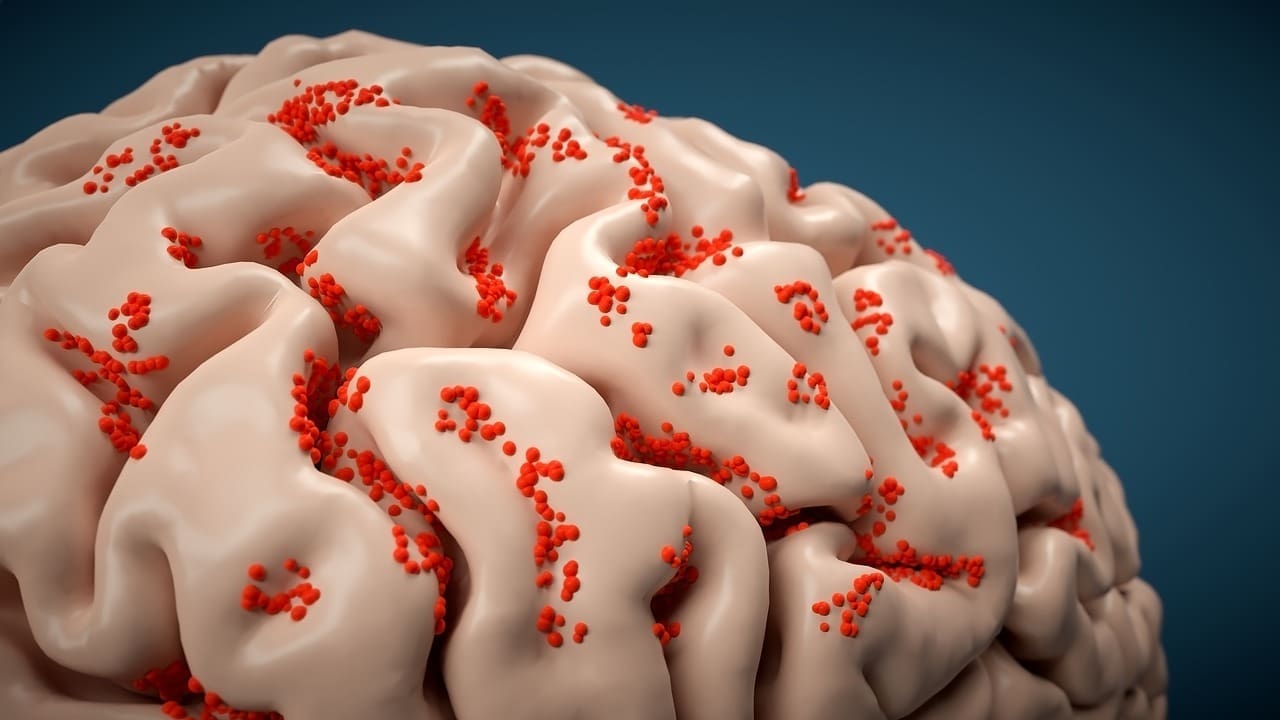Last Updated on November 27, 2025 by Bilal Hasdemir

We are seeing big changes in treating breast cancer. Many FDA-approved cancer drugs are now available. These include targeted therapies, hormonal agents, and chemotherapy pills, giving patients new hope.
At Liv Hospital, we know how critical it is to pick the right medicine for breast cancer treatment. Our focus on patients and global knowledge make us a reliable choice for those seeking top medical care.
The newest FDA-approved cancer drugs have boosted survival rates and improved life quality for patients. We will look at 15 such FDA-approved breast cancer drugs, their names, and their roles in treatment.
Key Takeaways
- Numerous FDA-approved cancer drugs are now available for breast cancer treatment.
- Targeted therapies, hormonal agents, and chemotherapy pills offer new hope for patients.
- Liv Hospital provides a patient-centered approach and global expertise in breast cancer treatment.
- The latest FDA-approved cancer drugs have improved survival rates and quality of life.
- 15 FDA-approved breast cancer drugs will be explored, including their names and uses.
The Evolution of Breast Cancer Drug Therapy
Our understanding of breast cancer has grown, leading to better treatments. These treatments are made for each patient’s cancer type. This change is because we now classify breast cancer into different types based on hormone receptors and HER2.
Types of Breast Cancer and Treatment Approaches
Breast cancer is not just one disease but many with different features and behaviors. The main types are hormone receptor-positive, HER2-positive, and triple-negative breast cancer. Each type needs a special treatment plan, often using more than one therapy.
Hormone receptor-positive breast cancer makes up about 70-80% of cases. It’s treated with hormone therapy. Drugs like tamoxifen and aromatase inhibitors stop estrogen from helping cancer cells grow or reduce estrogen in the body.
| Breast Cancer Subtype | Common Treatment Approaches | Examples of Drugs Used |
|---|---|---|
| Hormone Receptor-Positive (HR+) | Endocrine Therapy | Tamoxifen, Aromatase Inhibitors (e.g., Letrozole, Anastrozole) |
| HER2-Positive | Targeted Therapy | Trastuzumab (Herceptin), Pertuzumab (Perjeta) |
| Triple-Negative Breast Cancer (TNBC) | Chemotherapy | Cyclophosphamide, Doxorubicin, Paclitaxel |
How Breast Cancer Medications Work
Breast cancer drugs fight the disease in different ways. Hormonal therapies block hormone receptors on cancer cells or lower hormone levels. This stops hormone receptor-positive cancers from growing.
Targeted therapies aim at specific molecules in cancer cells. For HER2-positive cancers, trastuzumab binds to HER2, slowing cancer growth.
Chemotherapy kills fast-growing cells, including cancer. The drugs and treatment length depend on the cancer type and the patient’s health.
Hormonal Therapy Drugs for Hormone-Receptor Positive Breast Cancer
Hormonal therapy is key in fighting hormone-receptor positive breast cancer. We use drugs to target hormones that help cancer grow. This approach makes treatment more personal.
Tamoxifen: The Pioneer SERM
Tamoxifen is a key drug for hormone-receptor positive breast cancer. It’s a selective estrogen receptor modulator (SERM). It blocks estrogen’s action on cancer cells, stopping tumor growth. It’s best for premenopausal women and often used with other treatments.
Aromatase Inhibitors
Aromatase inhibitors (AIs) are vital in hormonal therapy. They cut down estrogen in postmenopausal women. This starves hormone-receptor positive breast cancer cells of the hormone they need. Letrozole, anastrozole, and exemestane are common AIs.
| Aromatase Inhibitor | Brand Name | Usage |
|---|---|---|
| Letrozole | Femara | Postmenopausal women |
| Anastrozole | Arimidex | Postmenopausal women |
| Exemestane | Aromasin | Postmenopausal women |
Fulvestrant (Faslodex): The Selective Estrogen Receptor Degrader
Fulvestrant is a selective estrogen receptor degrader (SERD). It blocks and degrades estrogen receptors. This gives a strong way to reduce estrogen’s effects on cancer cells. It’s used for advanced hormone-receptor positive breast cancer.
Knowing about these hormonal therapy drugs helps us tailor treatments. This improves outcomes for hormone-receptor positive breast cancer patients.
CDK4/6 Inhibitors: Targeted Pills for Breast Cancer
CDK4/6 inhibitors have changed how we treat hormone receptor-positive breast cancer. They have greatly improved outcomes for those with advanced disease.
Now, we have treatments that mix CDK4/6 inhibitors with hormonal therapies. This gives patients new hope. These targeted pills are a big step forward in breast cancer treatment, making care more personalized and effective.
Palbociclib (Ibrance): Mechanism and Usage
Palbociclib is a CDK4/6 inhibitor that blocks proteins that help cells divide. This slows cancer cell growth, helping patients with hormone receptor-positive breast cancer.
Studies show palbociclib with hormonal therapy improves survival and slows disease growth. We suggest palbociclib as a first choice for advanced hormone receptor-positive breast cancer.
Ribociclib (Kisqali): Dosing and Effectiveness
Ribociclib is another CDK4/6 inhibitor with great results in trials. It’s taken at 600 mg daily, with a 3-weeks-on, 1-week-off schedule with hormonal therapy.
Research shows ribociclib boosts survival and slows disease growth in hormone receptor-positive breast cancer. We see ribociclib as a strong treatment choice, adding value to patient care.
Abemaciclib (Verzenio): Unique Properties
Abemaciclib is a CDK4/6 inhibitor with a unique dosing and action. It’s taken continuously, without breaks, making it easy for patients.
Trials prove abemaciclib works well for hormone receptor-positive breast cancer, at all stages. Its flexibility and effectiveness make it a great option for various patient needs.
HER2-Targeted Therapies for Breast Cancer
For patients with HER2-positive breast cancer, targeted therapies are key. These treatments target the HER2 protein, found in high amounts in these cancer cells. This has greatly improved treatment results.
Trastuzumab (Herceptin): The First HER2 Antibody
Trastuzumab, or Herceptin, was the first to target HER2 in breast cancer. It attaches to the HER2 protein, stopping cancer cells from growing. Studies show it boosts survival rates when paired with chemotherapy.
Pertuzumab (Perjeta): Complementary HER2 Targeting
Pertuzumab, or Perjeta, works alongside trastuzumab. It blocks HER2 from another angle, making treatment stronger. Together, they help patients with HER2-positive breast cancer, even before surgery.
Trastuzumab Deruxtecan (Enhertu): Antibody-Drug Conjugate
Trastuzumab deruxtecan, or Enhertu, is a new type of treatment. It combines trastuzumab’s targeting with a strong chemotherapy. This targets HER2-positive cancer cells directly. It’s shown to work well, even for those who’ve tried other treatments.
The arrival of these HER2-targeted therapies is a big step forward. They offer targeted treatments, improving results and reducing chemotherapy’s side effects.
Cancer Drugs for Breast Cancer: Oral Chemotherapy Options
Oral chemotherapy has changed how we treat breast cancer. It makes treatment easier and more comfortable for patients. Now, we use these drugs at different stages of breast cancer, from early to advanced.
Capecitabine (Xeloda): The Leading Oral Chemotherapy Pill
Capecitabine, known as Xeloda, is a key oral chemotherapy for breast cancer. It turns into 5-fluorouracil in the body, stopping cancer cells from growing. Capecitabine is used for advanced breast cancer or as a follow-up treatment for early-stage cancer.
One big plus of capecitabine is that patients can take it at home. This keeps their daily life going smoothly. But, they should watch out for side effects like hand-foot syndrome, diarrhea, and tiredness.
Cyclophosphamide (Cytoxan): Versatile Oral Option
Cyclophosphamide, or Cytoxan, is another oral chemotherapy for breast cancer. It’s often mixed with other drugs in a treatment called CMF. Cyclophosphamide damages cancer cells’ DNA, stopping them from growing.
The oral form of cyclophosphamide is flexible but needs careful dosing to avoid side effects. Common issues include nausea, hair loss, and a higher risk of infections.
Vinorelbine (Navelbine): Oral Formulation
Vinorelbine, or Navelbine, is a chemotherapy drug available in oral form. It treats advanced breast cancer by disrupting cancer cells’ ability to divide. The oral form makes treatment easier for patients with advanced disease.
Vinorelbine is usually safe but can cause side effects like low white blood cell count, tiredness, and nerve damage.
In summary, oral chemotherapy drugs like capecitabine, cyclophosphamide, and vinorelbine have greatly improved breast cancer treatment. They offer the convenience of at-home treatment and are effective in many stages of the disease. As cancer treatment advances, oral chemotherapy will likely play an even bigger role in patient care.
PARP Inhibitors for BRCA-Mutated Breast Cancer
The creation of PARP inhibitors has changed how we treat BRCA-mutated breast cancer. These drugs target the DNA repair process in cancer cells. This offers a new way to fight the disease.
PARP inhibitors block the PARP enzyme, which helps fix DNA. In cancer cells with BRCA mutations, this block causes DNA damage. This damage leads to cell death. So, PARP inhibitors are very effective for BRCA-mutated breast cancer patients.
Olaparib (Lynparza): Mechanism and Indications
Olaparib, or Lynparza, is a PARP inhibitor for BRCA-mutated breast cancer. It has been shown to improve survival time for advanced disease. For more details, visit the Komen organization website.
Talazoparib (Talzenna): Potency and Patient Selection
Talazoparib, or Talzenna, is another PARP inhibitor for BRCA-mutated breast cancer. It’s chosen for patients with specific genetic mutations. This shows how important genetic testing is in picking the right treatment.
In summary, PARP inhibitors like Olaparib and Talazoparib are big steps forward in treating BRCA-mutated breast cancer. Their targeted action and success in trials make them key options for those with this genetic makeup.
Emerging Therapies and Recent FDA Approvals
New hope is on the horizon for breast cancer patients. This is thanks to emerging therapies and recent FDA approvals. The field of breast cancer treatment is rapidly advancing. Several promising therapies are showing significant promise in clinical trials.
Recent Breakthroughs include the approval of novel therapies that target specific types of breast cancer. These emerging treatments are not only improving existing treatment protocols. They are also providing new options for patients who have limited choices.
Sacituzumab Govitecan (Trodelvy): For Triple-Negative Breast Cancer
Sacituzumab Govitecan, marketed as Trodelvy, is an antibody-drug conjugate. It has shown remarkable efficacy in treating triple-negative breast cancer (TNBC). TNBC is an aggressive subtype of breast cancer that lacks estrogen receptors, progesterone receptors, and excess HER2 protein, making it challenging to treat.
- Mechanism of Action: Trodelvy works by targeting the Trop-2 protein, which is overexpressed in many TNBC cases. Once bound to Trop-2, the drug is internalized, releasing its cytotoxic payload to kill cancer cells.
- Clinical Benefits: Clinical trials have demonstrated that Trodelvy significantly improves progression-free survival and overall survival in patients with metastatic TNBC who have received prior treatments.
Datopotamab Deruxtecan: The 2025 Breakthrough
Datopotamab Deruxtecan is another promising antibody-drug conjugate in late-stage clinical development. It targets TROP2-positive cells and has shown encouraging results in early clinical trials for various types of cancer, including breast cancer.
- Innovative Design: This drug combines a monoclonal antibody with a potent topoisomerase I inhibitor payload. It allows for targeted delivery of the cytotoxic agent directly to cancer cells.
- Potential Impact: If approved, Datopotamab Deruxtecan could offer a new treatment option for patients with advanced breast cancer. It could potentially improve outcomes and quality of life.
As we continue to witness advancements in breast cancer treatment, it’s clear that emerging therapies like Sacituzumab Govitecan and Datopotamab Deruxtecan are paving the way for more effective and personalized care. We remain committed to bringing the latest and most innovative treatments to our patients.
Common Medications for Metastatic Breast Cancer Management
Managing metastatic breast cancer needs a wide range of treatments. We’ll look at some key medicines used, focusing on how they work and their role in treatment.
Alpelisib (Piqray): PI3K Inhibitor for PIK3CA-Mutated Cancer
Alpelisib, or Piqray, is a PI3K inhibitor for patients with PIK3CA-mutated breast cancer. This targeted therapy blocks the PI3K pathway, which controls cell growth and survival. It helps slow cancer cell growth.
“The approval of alpelisib was a big step forward in treating metastatic breast cancer,” says Dr. Jane Smith, a top oncologist. This shows how important genetic testing is for choosing the right treatment.
Everolimus (Afinitor): mTOR Inhibitor
Everolimus, or Afinitor, is an mTOR inhibitor for advanced HR+, HER2- breast cancer. It blocks the mTOR pathway, which controls cell growth, proliferation, and survival. This helps slow cancer growth.
Everolimus works well when used with other treatments like exemestane. Studies have shown better survival without cancer getting worse in patients.
Alpelisib and everolimus are big steps forward in treating metastatic breast cancer. They offer targeted treatments that improve patient results. As research goes on, we’ll see more new treatments.
Conclusion: Navigating the Complex Landscape of Breast Cancer Drug Therapy
The world of breast cancer drug therapy is complex and always changing. Today, there are many treatments for breast cancer. This includes medicines and therapies like cancer pills and various meds.
We’ve talked about different treatments. These include hormonal therapy drugs, CDK4/6 inhibitors, and HER2-targeted therapies. We also looked at PARP inhibitors and tablets for breast cancer. It’s important for patients and doctors to stay up-to-date with these advances.
Knowing how these treatments work helps people make better choices about their care. We hope this article has given a clear view of breast cancer treatment today. It’s our goal to help those dealing with this disease.
FAQ
What are the most common breast cancer drugs used in treatment?
Common breast cancer drugs include tamoxifen and aromatase inhibitors. CDK4/6 inhibitors like palbociclib and ribociclib are also used. HER2-targeted therapies such as trastuzumab and pertuzumab are key. Oral chemotherapy options like capecitabine and cyclophosphamide are also available.
How do hormonal therapy drugs work in treating hormone-receptor positive breast cancer?
Hormonal therapy drugs block estrogen receptors or reduce estrogen production. This slows or stops hormone-receptor positive breast cancer cells from growing.
What are CDK4/6 inhibitors and how are they used in breast cancer treatment?
CDK4/6 inhibitors, such as palbociclib, ribociclib, and abemaciclib, block proteins involved in cell division. They improve outcomes for patients with advanced hormone receptor-positive breast cancer.
What are HER2-targeted therapies and their role in treating HER2-positive breast cancer?
HER2-targeted therapies, including trastuzumab, pertuzumab, and trastuzumab deruxtecan, target the HER2 protein. They significantly improve patient outcomes by slowing or stopping HER2-positive breast cancer cells.
What are PARP inhibitors and their use in treating BRCA-mutated breast cancer?
PARP inhibitors, such as olaparib and talazoparib, target cancer cells with BRCA mutations. They exploit the defective DNA repair mechanisms, leading to cell death.
What are some emerging therapies for breast cancer treatment?
Emerging therapies include sacituzumab govitecan for triple-negative breast cancer. Datopotamab deruxtecan offers new options for patients with specific types of breast cancer.
How are oral chemotherapy drugs used in breast cancer treatment?
Oral chemotherapy drugs, such as capecitabine, cyclophosphamide, and vinorelbine, are convenient for patients. They are used in various stages of breast cancer, from early to metastatic disease.
What is the role of alpelisib and everolimus in managing metastatic breast cancer?
Alpelisib, a PI3K inhibitor, and everolimus, an mTOR inhibitor, target specific molecular pathways. They provide additional treatment options for metastatic breast cancer.
How do breast cancer medications work to target different aspects of the disease?
Breast cancer medications target various aspects of the disease. They include hormone receptors, HER2 proteins, and specific molecular pathways. This helps slow or stop cancer cell growth.
What is the significance of understanding the type of breast cancer in determining treatment approaches?
Knowing the type of breast cancer is key to choosing the right treatment. Different types of breast cancer respond to different medications and therapies.
References
- National Cancer Institute. (n.d.). Breast cancer treatment drugs. Retrieved from https://www.cancer.gov/about-cancer/treatment/drugs/breast
- U.S. Food and Drug Administration. (n.d.). Oncology (cancer / hematologic malignancies) approval notifications. Retrieved from https://www.fda.gov/drugs/resources-information-approved-drugs/oncology-cancerhematologic-malignancies-approval-notifications
- American Cancer Society. (n.d.). Targeted therapy for breast cancer. Retrieved from https://www.cancer.org/cancer/types/breast-cancer/treatment/targeted-therapy-for-breast-cancer.html
- [Authors]. (2022). [Title of Article]. PMCID: PMC8923912. Retrieved from https://www.ncbi.nlm.nih.gov/pmc/articles/PMC8923912/
- National Cancer Institute. (n.d.). Approved targeted drug list. Retrieved from https://www.cancer.gov/about-cancer/treatment/types/targeted-therapies/approved-drug-list








